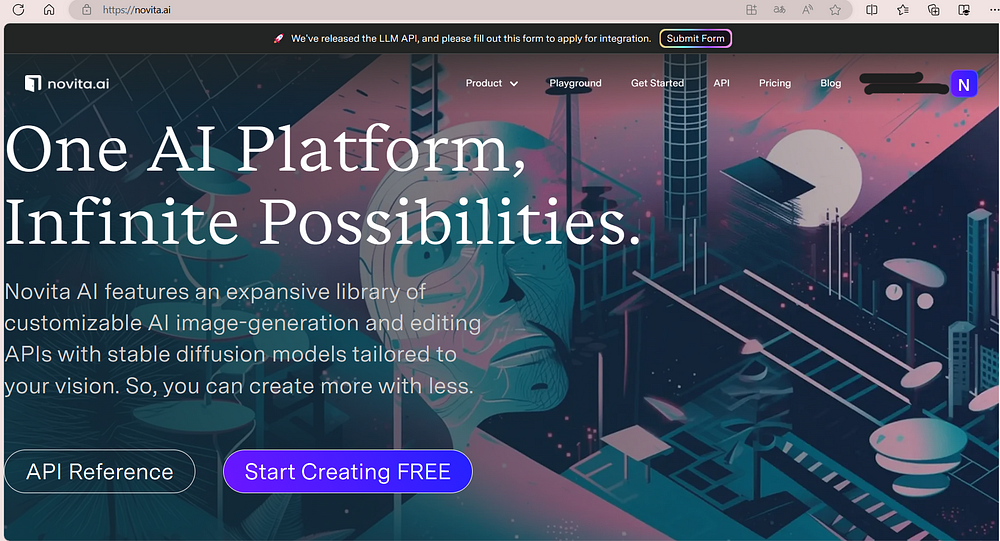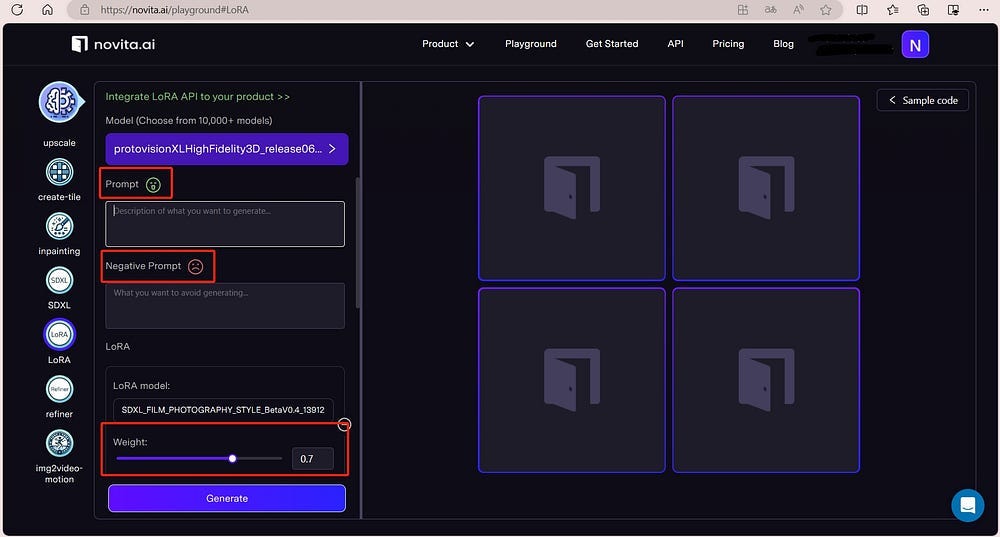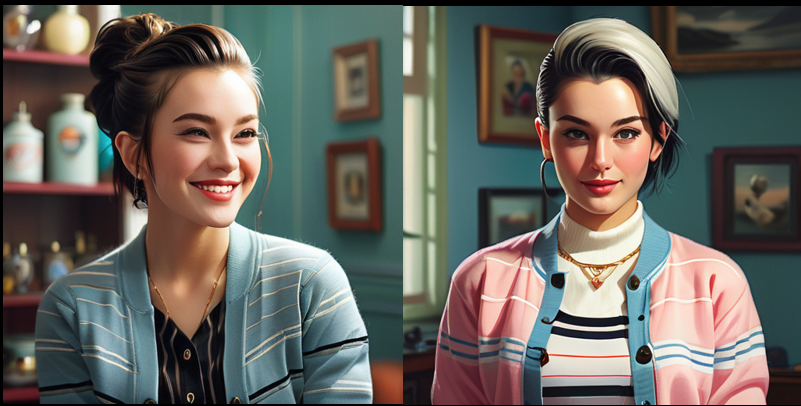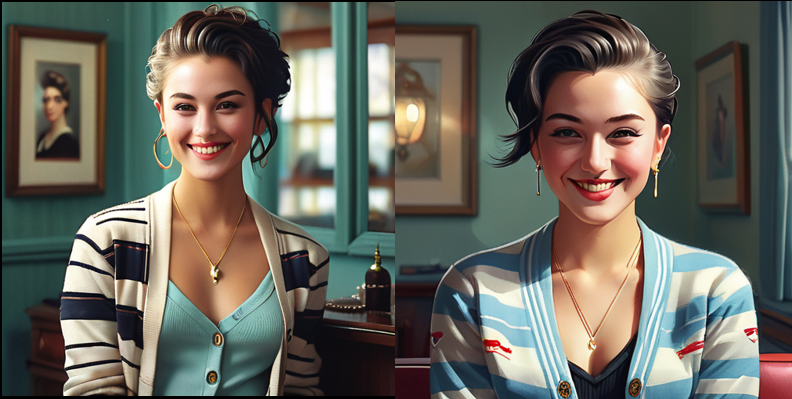Mastering Lora AI: Your Ultimate Guide

Discover how LoRa AI technology is revolutionizing the IoT industry with its long-range capabilities and artificial intelligence integration.
Are you ready to delve into the world of cutting-edge AI technology that is revolutionizing the way we approach machine learning models? In this blog, we will explore the LoRA Model — a sophisticated advancement in artificial intelligence that is reshaping industries. Discover how LoRA AI is utilized in optimizing fine-tuning processes, enhancing Large Language Models (LLMs), and the practical applications in Stable Diffusion. We will also address the challenges faced in implementing LoRA AI and discuss the future innovations and possibilities that LoRA AI holds, preparing you for the next wave of AI advancements.
What is a LoRA Model?
LoRA is a groundbreaking advancement in the realm of AI and language processing.
The Concept of LoRA Model
LoRA, short for Low-Rank Adaptation, is a type of Stable Diffusion model that applies small changes to the standard checkpoint models. These small changes are applied to the cross-attention layers of the model, which is where the image and the prompt meet. By fine-tuning these cross-attention layers, LoRA models can enhance the model’s ability to generate images with specific styles, poses, or concepts.
LoRA models are smaller and more manageable in terms of file size compared to the standard checkpoint models. They offer a good trade-off between file size and training power, making them an attractive solution for users who have an extensive collection of models.
Once trained, a LoRA model can be used in combination with other Stable Diffusion models to generate images with the desired style, pose, or concept. By including the LoRA model’s name and weight in the prompt or negative prompt of the Stable Diffusion, users can easily apply the LoRA model and fine-tune the generated images according to their preferences.
The Importance of LoRA Model
LoRA models play a crucial role in enhancing the fine-tuning process of Stable Diffusion models. They provide a way to introduce specific styles, poses, or concepts into the generated images, making them more customized and artistic. By applying small changes to the cross-attention layers, LoRA models allow for more precise control over the generated images. This fine-tuning process can lead to higher-quality and more accurate outputs. They can also enhance the training process, provide more control over the generated images, and make AI-generated art more customizable and artistic.
In essence, LoRA represents a smarter, more efficient way to leverage the power of large language models, making them more adaptable, accessible, and effective.
The Advantages of LoRA Model
- Efficiency: LoRA reduces the computational cost by working with low-rank matrices, making it more feasible for resource-constrained environments. It focuses on the optimal use of computational resources by decreasing the count of parameters that should be adjusted or trained, and requires less memory and processing power, and also allows for quicker iterations and experiments.
- Smaller Changes: LoRA models apply smaller changes to the cross-attention layers of Stable Diffusion models, allowing for more precise control over the generated images.
- Training Power: Despite their smaller size, LoRA models still offer a good trade-off between file size and training power, making them an attractive solution for users with a large collection of models.
- Customization: LoRA models provide more customization options, allowing users to introduce specific styles, poses, or concepts into the generated images.

The Applications of LoRA AI
LoRA AI Optimizes the Fine-Tuning Process of Stable Diffusion
By freezing the original model weights and applying changes to a separate set of weights, LoRA modifies the fine-tuning process, and then added to the original parameters. LoRA transforms the model parameters into a lower-rank dimension, reducing the number of parameters that need training, thus speeding up the process and lowering costs.
In Stable Diffusion models, LoRA AI applies small changes to the cross-attention layers, allowing for more precise control over the generated images. The fine-tuning process involves training the LoRA AI model on a dataset that contains images with the desired style, pose, or concept. By optimizing the fine-tuning process, LoRA AI makes it easier to train Stable Diffusion models on different concepts, such as characters or specific styles. This results in more accurate and high-quality outputs.
LoRA AI Advanced Large Language Models (LLMs)
Large language models, such as GPT-3, are algorithms tuned generating human-like text, having revolutionized natural language processing (NLP) tasks. With LoRA AI, developers can tailor large language models to specific domains, by training the model on domain-specific datasets.
The integration of LoRA into LLMs has tangible, real-world implications that are already being felt across various sectors. In the healthcare industry, LoRA-enhanced LLMs provide healthcare professionals with deeper insights and aiding in more accurate diagnoses. In education, LLMs assist educators in content creation, grading, and providing feedback to reduce their administrative burden and allow them to focus more on teaching and student interaction. In content creation, LLMs generate ideas, draft outlines, and even create entire pieces of content for content producers.

How to Use LoRA With Stable Diffusion
Using LoRA with Stable Diffusion is a straightforward process that allows users to customize their AI-generated images. Here’s a step-by-step guide on how to use LoRA with Stable Diffusion:
Step1: Open the AI Image Generator
Open the AI Image Generator that offers LoRA Models, such as novita.ai. When log in novita.ai, you will land on this page.

Step2: Find the “LoRA”
Click on the “Playground” , then find the “LoRA”.

Step3: Set the parameters
Choose the LoRA Model you want, and set its weight, then input “Prompt” and “Negative Prompt” words to describe what you want to generat and avoid. Next, setting the other parameters according to your needs.


Step4: Generate and Download

Challenges and Solutions in LoRA AI
While LoRA AI offers many advantages in fine-tuning Stable Diffusion models, there are also some challenges that users may encounter.
Addressing the Limitations of LoRA AI
One of the main limitations is the number of parameters that can be fine-tuned in the cross-attention layers of Stable Diffusion models. The smaller size of LoRA models compared to standard checkpoint models restricts the fine-tuning to specific features or styles. Another is that users may need access to powerful GPUs and large datasets to effectively train and use LoRA models.
To address these limitations, it is important to provide users with clear documentation and tutorials on how to effectively use LoRA AI. Additionally, offering pre-trained LoRA models and optimizing the training process can help users with limited resources or knowledge to take advantage of LoRA AI and create customized AI-generated art.
Overcoming Common Implementation Hurdles
One common hurdle is the local storage required to store the LoRA models. As LoRA models can be smaller in file size compared to standard checkpoint models, users may need to manage their local storage effectively to accommodate multiple LoRA models. Another is the need for the original weights of the Stable Diffusion models that the LoRA models are built upon. Without the original weights, the LoRA models may not function as intended. Managing file size and accessing the correct weights can be overcome by following best practices.

Future of LoRA AI
The future of LoRA AI looks promising. As the field of artificial intelligence and machine learning continues to evolve, new developments and advancements in LoRA AI are expected.
Innovations on the Horizon for LoRA AI
The future of LoRA AI holds exciting innovations and advancements in the field of AI-generated art. Researchers and developers are working on new LoRA models that offer even more specific customization options and enhanced capabilities, to become even more sophisticated in understanding and generating human language in specific areas of knowledge.
In addition, the exploration of the customisation of AI applications with LoRA is expected to contribute to the future development of LoRA AI. With LoRA, leading to highly personalised AI solutions.
Preparing for the Next Wave of AI with LoRA
By familiarizing yourself with the training process and best practices, you can understand the intricacies of LoRA models andtake full advantage of the customization options offered by LoRA. Optimizing computational resources is crucial for working with LoRA models. This may involve investing in powerful GPUs or cloud computing services to handle the training and generation processes efficiently.
Staying updated with the latest developments in the field is essential to ensure you can stay ahead of the curve and be prepared for the next wave of AI.

Frequently Asked Questions
What Makes LoRA AI Different from Other AI Models?
LoRA AI is different from other AI models because it applies small changes to the cross-attention layers of Stable Diffusion models, allowing for more precise control and customization options in the generated images.
Can LoRA AI Be Used in Small Scale Projects?
Yes, LoRA AI can be used in small-scale projects. It offers a good trade-off between file size and training power, making it suitable for users with limited resources or storage capacity. Users can choose specific LoRA models that suit their project requirements and generate customized AI-generated art.
Conclusion
In conclusion, the LoRA model stands out for its advanced capabilities in optimizing fine-tuning processes, handling large language models, and ensuring stable diffusion. Its applications extend to various fields, promising innovations and preparing for the next wave of AI advancements. While addressing challenges and limitations is essential, overcoming these hurdles and exploring the future potential of LoRA AI is crucial. Stay updated with the evolving landscape of artificial intelligence, and consider how LoRA can revolutionize your projects.
novita.ai provides Stable Diffusion API and hundreds of fast and cheapest AI image generation APIs for 10,000 models.🎯 Fastest generation in just 2s, Pay-As-You-Go, a minimum of $0.0015 for each standard image, you can add your own models and avoid GPU maintenance. Free to share open-source extensions.
Recommended reading